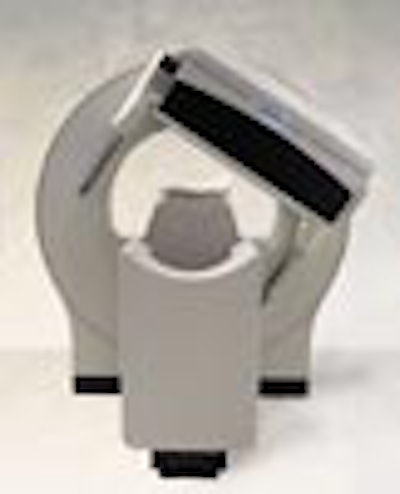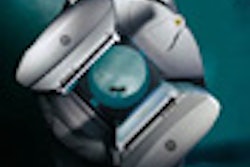
ST. LOUIS - A new single-head gamma camera was one of several new product introductions by Marconi Medical Systems at this week's Society of Nuclear Medicine conference in St. Louis. The Cleveland vendor also displayed new developments in coincidence detection and image registration.
Meridian is a budget-priced single-head system designed for quick installation in small spaces. The system should prove especially attractive in global markets, according to Josh Gurewitz, marketing manager at Marconi. While the system is designed for an entry-level price segment, it will come with Marconi's Odyssey FX image processing workstation.
Meridian will replace Prism 1000 and Prism 1500 in Marconi's single-head product line. Deliveries of the system should begin in October.
Marconi also displayed advances in its coincidence detection program, with upgrades to its gPet high-energy imaging technique. gPetAZ includes new processing algorithms and digital enhancements that improve the system's performance, resulting in higher count rates and faster whole-body acquisition times.
The upgrade is based on Marconi's new AZTec technology, which employs a new integration and rejection algorithm to capture a greater number of "true" coincidence events, ultimately improving image quality and lesion detection, according to the company. Marconi released AZTec performance statistics at its SNM booth, Gurewitz said.
gPetAZ functions with both of Marconi's high-end gamma cameras, the dual-head Axis and the triple-head Irix. The company believes that the combination of an Irix or Axis system with gPetAZ can provide nuclear medicine centers with a good combination of PET and SPECT imaging at a price far lower than a dedicated PET camera.
Finally, Marconi highlighted the next generation of its image fusion software. The new package is targeted at integrated oncology applications, with the goal of providing oncologists with the ability to fuse nuclear medicine images with CT and MRI data for radiation therapy and simulation.
By Brian Casey
AuntMinnie.com staff writer
June 8, 2000
Let AuntMinnie.com know what you think about this story.
Copyright © 2000 AuntMinnie.com
















